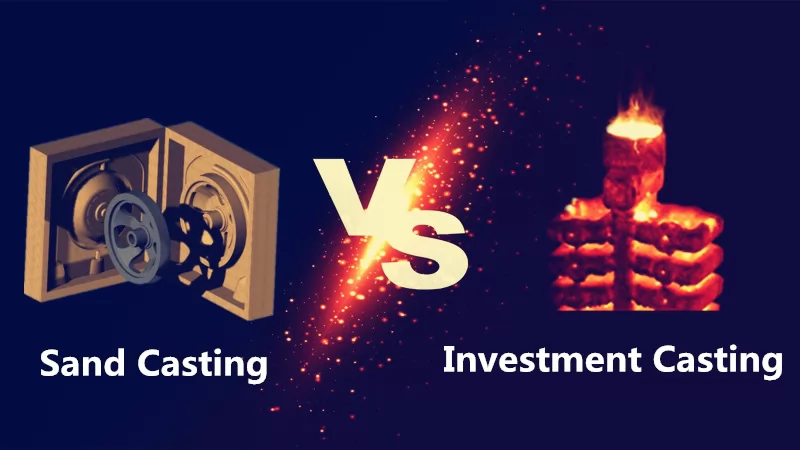
What is Sand Casting Process
Sand casting, the most widely used casting process, utilizes expendable sand molds to form complex metal parts that can be made of nearly any alloy. Because the sand mold must be destroyed in order to remove the part, called the casting, sand casting typically has a low production rate. The sand casting process involves the use of a furnace, metal, pattern, and sand mold. The metal is melted in the furnace and then ladled and poured into the cavity of the sand mold, which is formed by the pattern.
Advantages of Sand Casting
Sand casting molding methods are divided into manual molding and machine molding.
Manual modeling features: convenient and flexible operation, strong adaptability, short preparation time for pattern production, but low productivity, high labor intensity, and difficult to guarantee the quality of castings. It is only suitable for single-piece small batch production.
Machine modeling characteristics: The main method of mass production of sand molds can significantly increase labor productivity, improve working conditions, and improve the dimensional accuracy and surface quality of castings, and reduce the machining allowance.
What is the Investment Casting Process
Investment casting, also known as lost wax casting, includes processes such as pressing wax, repairing wax, assembling trees, dipping slurry, melting wax, casting molten metal, and post-processing.
Lost wax casting is to use wax to make a wax mold of the part to be cast, and then coat the wax mold with mud, which is a mud mold. After the clay mold is dried, put it in hot water to melt the internal wax mold. Take out the clay mold from the melted wax mold and fire it into a pottery mold. Once roasted. Generally, a pouring port is left when making a mud mold, and then molten metal is poured from the pouring port. After cooling, the required parts are made.
Advantages of Investment Casting
The biggest advantage of investment casting is that because investment castings have high dimensional accuracy and surface finish, they can reduce machining work, but leave a little machining allowance on the parts that require higher parts, and even some castings only Leave the grinding and polishing allowance, you can use it without machining. It can be seen that the use of investment casting method can greatly save machine tool equipment and processing man-hours, and greatly save metal raw materials.
Another advantage of the investment casting method is that it can cast complex castings of various alloys, especially high-temperature alloy castings. For example, the blade of a jet engine, its streamlined profile and cooling cavity, can hardly be formed by machining technology. Production with investment casting process can not only achieve mass production, ensure the consistency of castings, but also avoid the stress concentration of residual knife marks after machining.
Difference Between Sand Casting and Investment Casting?
| Sand Casting | Investment Casting | |
| Cost | Lower | Expensive |
| Weight | Unlimited | Ozs to 100 lbs. |
| As Cast Finish(RMS) | 150~350 | 60~125 |
| Dimensional Tolerance |
±.010"
±.030"
|
±.010"
±.020"
|
| Casting Alloy | Most black/non-ferrous metals | Most ferrous/non-ferrous metals |
| Advantages |
|
|
| Disadvantages |
|
|
Choosing Between Investment Casting or Sand Casting
If you want to create a casting business, choosing the right casting method is important to achieve success. There are 5 aspects you should consider for casting manufacturing.
Size
Investment casting process is most adopted for small steel castings ranging from 0.1kg-50kg.However,we often choose sand casting process for iron castings or large steel castings above 50kg.
Surface Finish
For the difference in molding material between investment casting and sand casting, the surface finish of investment casting will be much better. And the surface of sand casting will look rough.
Cost
Investment casting may have an expensive tool to spend, while sand casting has a lower cost at the casting tool.
Cycle Time
Both investment casting and sand casting can achieve mass production, while they have very different cycle times. Sand casting may need a long time to produce and other time to deal with the rough surface. In comparison, investment casting provides a quick production process and shot cycle time with no after-process products.
Conclusion
BESSER is an investment casting company from China. If you need, we can provide you with high-quality investment casting services. Look forward to working with you!



